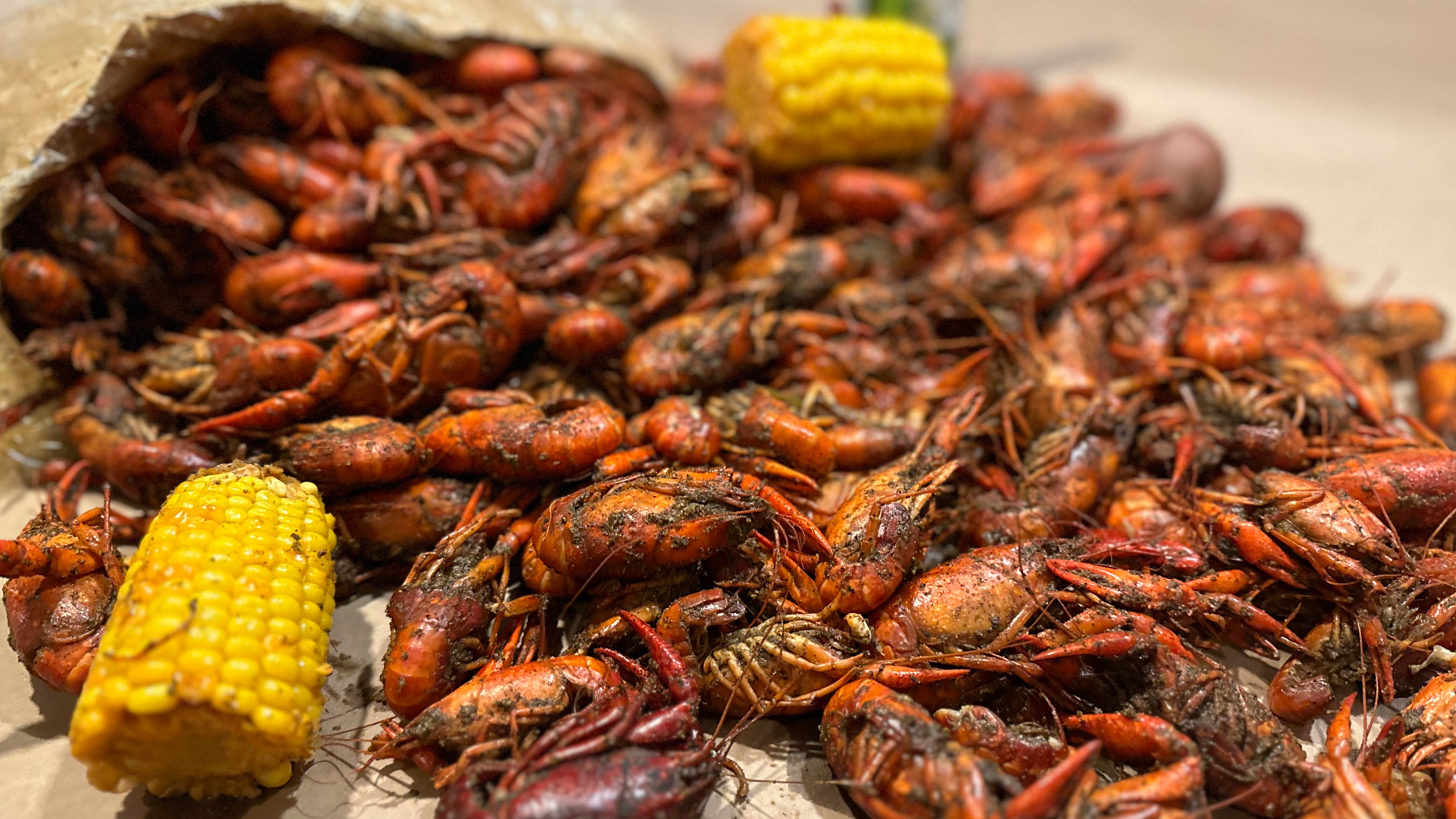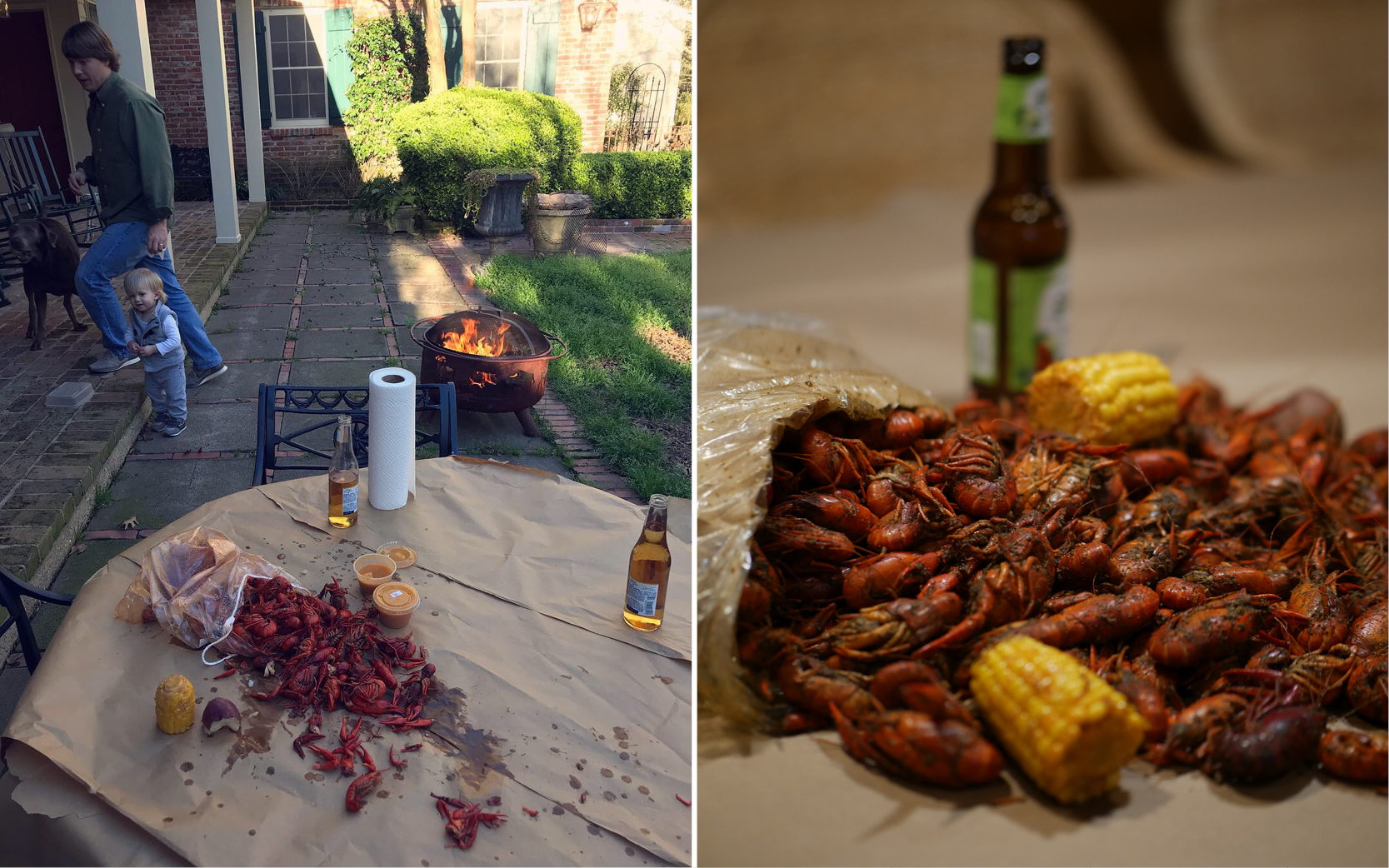
LAISSEZ LES BONS TEMPS ROULER
February in Louisiana ushers in crawfish season, a time of year that every Louisiana resident looks forward to all year round. Whether you like them boiled, fried, or cooked in your Mama’s étouffée, if you’re a Louisianian, you have a preference. Crawfish season typically occurs from February through May, but it varies from year to year and is dependent upon rainfall and temperatures. Louisiana loves any opportunity to celebrate, and crawfish provide the main course for many celebrations that occur in Louisiana “winter” and spring months. Fortuitously, Mardi Gras and Easter always fall within the season and crawfish play a starring role in the festivities. Good Friday crawfish boils provide the perfect answer to the good South Louisiana Catholic’s requirement to go meatless on Lenten Fridays. Crawfish pairs perfectly with a cold drink (likely alcoholic if you’re a native), a yard full of loud children, and friends/family – the image of a pre-parade Mardi Gras celebration straight out of every memory from my youth. However, you don’t need a formal reason to have a crawfish boil, as the boil itself will be the cause for merriment.

WHAT ARE MUDBUGS
Crawfish are “bottom-feeders,” known to feed on whatever plant detritus, insects, fish, or small animals they can get their pincers on. They are arthropods with segmented bodies, which make them easy to peel and eat. Crawfish meat is like that of a lobster, but not as rich and obviously much smaller. Crawfish meat is highly nutritious and low in fat. The early crawfish of the season tend to be on the smaller side and their red shells are softer compared to the much larger bodied crawfish of the late-season crop that have darker, tougher shells. This difference in size and shell thickness is due to the stage of growth that the early vs. late crop lives to see.
CRAWFISH & RICE, AN ACCIDENTAL LOVE STORY
Crawfish exist naturally in the muddy soils of wetlands. The EPA defines wetlands as “areas where water covers the soil, or is present either at or near the surface of the soil all year or for varying periods of time during the year, including during the growing season.” Louisiana is covered in wetlands and a natural abundance of water due to the high amount of annual rainfall. Louisiana averages 60 inches of rainfall a year, the highest in the nation. Crawfish have always grown in natural abundance in existing waterways, ditches, and all other bodies of water in Louisiana. Across the state, the natural process of flooding and draining that occurs in wetlands and alluvial waterways pushes crawfish to burrow into the muddy soils when the water recedes and then migrate to the flooded area when the water comes up. Native Americans were the first known group to make the most of these tasty crustaceans. However, it wasn’t until conventional farming progressed during the 1800s that crawfish truly broke out as a commercial farming industry of its own. Louisiana farmers recognized that by flooding their rice fields, they were creating the ideal environment for crawfish to naturally migrate into them. The natural migration provided these Louisiana farmers with an accidental crop rotation during the winter months and an abundance of crawfish to meet the need for a growing interest in the shellfish as a popular culinary dish. Crawfish grew in popularity during this time and commercial rice farmers began intentionally “seeding” certain species of crawfish into their fields after rice harvest was complete. Depending on what region of the state you are in, rice harvest typically occurs from August through October, at which time the same fields are then reflooded and intentionally seeded with crawfish. In some cases, the fields are reflooded and the naturally occurring crawfish simply migrate into the wet fields. The rice stubble is generally left in the field after harvest and the crawfish capitalize on the leftover nutrition source. Some crawfish farmers in South Louisiana plant a ratoon rice crop and simply leave the secondary crop unharvested in the field to remain as a robust food source for their crawfish crop that follows. Once the crawfish have reached a certain level of maturity (roughly 3 inches or larger), the crawfish are baited, trapped, and removed for market. Commercial crawfish are typically harvested from December to June, but weather patterns can impact the timing and length of a given season. Wild crawfish are typically harvested between March-June, but this is also dependent upon the unpredictable nature of Louisiana weather patterns.
The rice/crawfish crop rotation is a mutually beneficial combination that capitalizes on Louisiana’s greatest agricultural resource: water. The abundance of water and the subtropical climate are ideal for both crawfish and rice crops. Crawfish and rice thrive in clay soils and an abundance of water. Clay soils provide crawfish with the structural strength and stability necessary to build their burrows. Clay provides rice with the same structural strength that a rice plant requires to stand upright throughout the growth cycle. Maintaining a flooded field for a rice crop disallows detrimental weed systems from thriving and deters pests from infiltrating the rice crop, limiting damage and improving yield potential. The water also provides another layer of structural support for the rice to stand straight and prevent lodging. The soil profile of clay is made up of tightly packed mineral particles that are very effective at retaining water. Rice and crawfish crops are flooded by use of surface water wells and through irrigation canal systems and pumping systems.

LOUISIANA CRAWFISH INDUSTRY
Although there are a handful of other southern states where crawfish farming occurs, Louisiana is by far the largest producer of crawfish in the United States, making up an estimated 90 percent of total wild and farmed crawfish production. According to LSU, there are 39 different species of freshwater crawfish naturally occurring in Louisiana, but the commercial industry is dominated by the red swamp crawfish and the white river crawfish. The red swamp crawfish is mostly farmed in South Louisiana and the white river crawfish is mostly found in North Louisiana, with the former making up the greater part of the commercial crawfish farming industry. Wild crawfish populations in Louisiana make up the remaining crawfish species in Louisiana and can be found in nearly any body of water in the state. Here are some additional facts on crawfish in Louisiana:
- There are between 1,300 to 1,600 crawfish farmers in Louisiana each year.
- Louisiana is responsible for commercially producing 130-150 million pounds of crawfish annually.
- There are around 120,000 acres of crawfish farmed in Louisiana, with most crawfish fields being between 10-40 acres.
- The Louisiana crawfish industry brings roughly $300 million to the Louisiana economy annually.
- In 2019, Louisiana recorded 250,000 acres of crawfish farms.
- $172 million dollar industry in the United States, largely isolated to Louisiana.
Peoples Company is now offering management services in Louisiana and throughout the Delta region. Come down to Louisiana to experience a true crawfish boil on the bayou. Contact Julie Boggs for more information on crawfish, rice, and how to manage your farmland for long-term appreciation. Julie can be contacted at 318.282.3870 or Julie.Boggs@PeoplesCompany.com.










